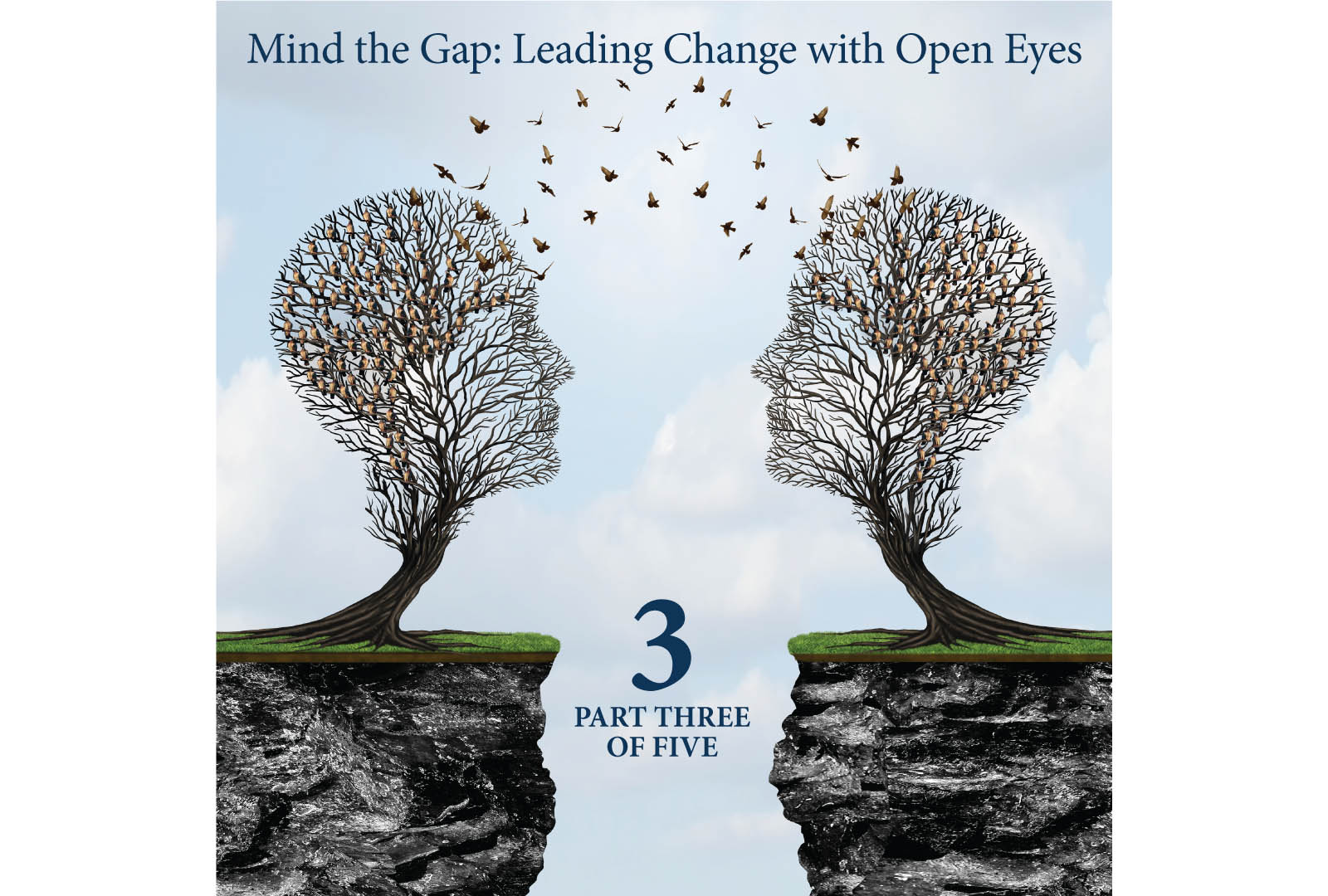MIND THE GAP: LEADING CHANGE WITH OPEN EYES Part Three: Where Role Demands Meet Unconscious Bias
In my last post we explored how the perception-reality gap between senior executives and middle managers shows up during organizational change and the negative impact the gap has on people and business success. But what causes this gap in the first place? In my experience, one driver is the interplay between the role demands of senior executives and the unconscious bias that is often created within their inner circles.
Whether a CEO, company president, or head of a major business unit, organizations’ most senior roles require meeting a range of intense external and internal job demands. Externally, they are sitting in what is often a very public hot seat, fielding requests from sometimes contentious boards, meeting investor demands, and responding to emerging market conditions. Internally, these senior leaders are accountable for making the ultimate tough calls regarding people, resourcing, strategy and business operations, to name just a few.
Birds of a Feather
How do senior executives handle the pressure cooker of meeting these intense demands? Many rely on trusted internal leaders – an inner circle – who keep them abreast of context, changes, and other critical data. These inner circles are crucial to success, but they often create an echo chamber of affinity bias, the tendency to trust people who think, behave, and look like they do.
Affinity bias frequently shapes who is in top leaders’ inner circles and can create reality gaps in their perception and knowledge of situations. These gaps can then lead to making misinformed, wrong calls about people and business decisions. In my last blog I shared about an American based leadership team operating without important cultural context during a restructure roll-out in Europe. These unchecked assumptions caused the American leaders to lose the pulse on the local team, which hindered the roll-out’s success.
Stemming from unconscious bias is the act of unintentionally building an ingroup and outgroup dynamic. Neuroscience research tells us that with intergroup bias we tend to “perceive the faces, words and actions of ingroup and outgroup members in a biased way.” We literally favor or reward ingroup members for a behavior and punish outgroup members for the same behavior. We also tend to under value or dismiss feedback from outside the ingroup. Intergroup bias shows up in subtle ways: slowly excluding people in strategic decision making for “efficiency reasons” or praising the work of one team member more than others. But over time these signals create resentment, lower trust, and disconnection with people outside the inner circle – the very people who play an important role in the successful execution of change efforts. And much like a social media algorithm which prioritizes content users see, unconscious bias in organizational life perpetually confirms assumptions about outgroup members. Meanwhile, disconfirming data on these biased assumptions never shows up in “the feed.”
Diverse and Fluid Inner Circles
As with social media, it is possible to disrupt algorithms in organizations through intention and diligence. To ensure the highest quality data for decision making, senior executives benefit from creating diverse, fluid, “temporary” inner circles with a robust representation of perspectives and voices. These “temporary” inner circles are charged with giving the leader unvarnished feedback, giving the executive a pulse check throughout a change effort.
The process starts with considering a key change effort at hand, what voices and perspectives are crucial to shaping a successful rollout? It also helps for leaders to reevaluate their assumptions on what skills and perspectives are needed for the circle. For example, through their work at Stanford Women’s Leadership Lab, Lori Nishiura Mackenzie and Shelley J. Correll cite the power of applying additive contribution when building teams. This includes examining assumptions underlying team composition, related success criteria, and the value each member brings.
In the next blog we’ll look at how the common practice of scapegoating disconnects top leaders from reality in their organizations’ change effectiveness. For now, I encourage you to spend a bit more time strategizing to develop an inclusive circle that will help you “mind the gap”.
Leadership Reflection:
To support the success of an important change roll-out, what information do you need to have? Who can provide it to you? Be very specific as you think about relationships, perspectives, and other factors you can leverage.

